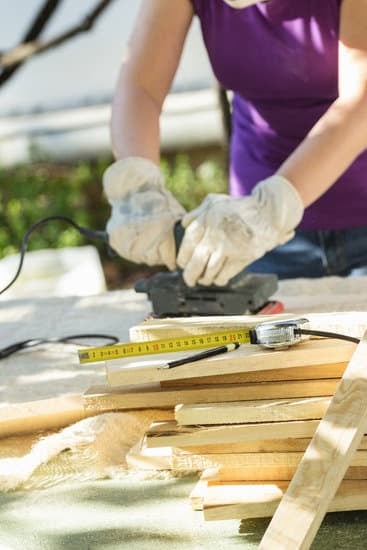Are you wondering how to get a loan for home improvements state assistance? Home improvements are an essential part of maintaining and enhancing the value of your property. However, the costs associated with home renovations can be significant, making it challenging for many homeowners to afford necessary upgrades. Fortunately, there are various state assistance programs and financial options available to help individuals fund their home improvement projects.
Understanding the different types of loans for home improvements is crucial in determining the best financing option for your specific needs. From home equity loans to personal loans and government-backed loans, each type of loan has its own advantages and drawbacks. Researching state assistance programs is also important as they provide financial aid and resources for homeowners looking to make improvements or repairs.
In this article, we will discuss the importance of home improvements and the financial assistance available from the state. We will delve into different types of loans, eligibility requirements, applying for state assistance, comparing lenders, and tips on maximizing your loan benefits. By the end of this article, you will have a comprehensive understanding of how to access state assistance for home improvements and make informed decisions about financing your renovation projects.
Understanding the Different Types of Loans
When it comes to financing home improvements, there are several options available for homeowners. Understanding the different types of loans can help you make an informed decision about how to fund your renovation projects. Here are some of the various loan options available for home improvements:
1. Home Equity Loans: A home equity loan allows homeowners to borrow against the equity in their home. This type of loan typically has a fixed interest rate and is repaid over a set term. Home equity loans can be a good option for larger renovation projects, as they provide access to a significant amount of funds.
2. Personal Loans: Personal loans are unsecured loans that can be used for a variety of purposes, including home improvements. These loans do not require any collateral and typically have a fixed interest rate and repayment terms. Personal loans may be a good option for smaller renovation projects or when homeowners do not have sufficient equity in their homes.
3. Government-Backed Loans: There are several government-backed loan programs that offer assistance specifically for home improvements, such as FHA 203(k) loans and VA renovation loans. These programs often have more flexible qualification requirements and may offer lower interest rates than traditional lenders.
Understanding the pros and cons of each type of loan can help you determine which option best suits your needs and financial situation when considering how to get a loan for home improvements state assistance.
It’s important to carefully consider your options and compare the terms and conditions offered by different lenders before making a decision. Additionally, researching state assistance programs for home improvements is crucial, as these programs can provide valuable financial support and resources for eligible homeowners. By understanding the different loan options available and exploring state assistance programs, you can make an informed choice about how to finance your home improvement projects while maximizing available resources.
Researching State Assistance Programs
When it comes to financing home improvements, state assistance programs can be a valuable resource for homeowners. These programs offer financial assistance in the form of grants, low-interest loans, or other subsidies to help homeowners make necessary upgrades and repairs. Researching state assistance programs is essential for those looking to obtain funding for home improvement projects.
Here are some steps on how to find state assistance programs for home improvements:
- Start by visiting your state’s official website and checking their housing or community development department. They often provide information on available assistance programs and eligibility requirements.
- Contact local housing authorities or nonprofit organizations in your area that specialize in housing assistance. They may have information about state-funded programs or resources available for homeowners.
- Reach out to your local government representatives or legislators’ offices. They can provide guidance on available resources and may even have staff dedicated to helping constituents access state assistance programs.
- Consider consulting with a housing counselor who can provide personalized guidance and support in navigating through different state assistance options.
By researching state assistance programs thoroughly, homeowners can identify the best opportunities for obtaining financial aid for their home improvement projects.
Another important aspect of researching state assistance programs is understanding the specific eligibility requirements for each program. Eligibility criteria may vary depending on factors such as income level, location, property type, and the nature of the improvements being made. It is crucial to carefully review these requirements to determine if you qualify for the available assistance.
In addition to identifying eligibility criteria, homeowners should also pay attention to any application deadlines or documentation requirements associated with state assistance programs. Being well-prepared with all necessary paperwork and submitting applications on time can significantly increase the chances of receiving financial aid for home improvements through state-funded programs.
Eligibility Requirements
When it comes to getting a loan for home improvements with state assistance, understanding the specific qualifications and requirements is crucial. Each state assistance program will have its own eligibility criteria that homeowners need to meet in order to qualify for financial aid. Typically, these programs are designed to assist low-income families, elderly homeowners, and individuals with disabilities who may struggle to afford necessary home repairs and improvements.
One of the common eligibility requirements for state assistance for home improvements is income level. Homeowners will need to demonstrate that their income falls within the guidelines set by the state in order to qualify for financial aid. Additionally, there may be specific requirements related to the property itself, such as it being the homeowner’s primary residence or meeting certain safety or health standards.
Another key factor in determining eligibility for state assistance programs is the type of improvement needed. Some programs may focus on essential repairs that are necessary for health and safety reasons, while others may also cover energy-efficient upgrades or accessibility modifications. Understanding what types of improvements are covered by each program can help homeowners determine if they qualify.
In addition to income and property requirements, applicants may also need to provide documentation proving ownership of the property, as well as proof of residency and other personal information. It’s important for homeowners to carefully review the eligibility requirements for any state assistance program they are considering applying to in order to ensure they meet all necessary qualifications.
Applying for State Assistance
When it comes to making improvements to your home, the cost can quickly add up. However, with the help of state assistance programs, you may be able to obtain financial aid to fund your home improvement projects. Understanding how to get a loan for home improvements state assistance is essential in taking the first step towards upgrading your living space while saving money.
Before applying for state assistance for home improvements, it’s crucial to research and understand the different programs available in your area. Start by visiting your state government’s website or contacting your local housing authority to inquire about any existing assistance programs. Many states offer grants, low-interest loans, or other financial incentives to homeowners looking to make essential repairs or upgrades to their properties.
Once you’ve identified the state assistance program that best fits your needs, it’s time to gather the necessary documentation required for the application process. This may include proof of income, property ownership documents, a detailed project proposal, and estimates from contractors. Be sure to carefully review the specific requirements outlined by the program and ensure that all documentation is accurate and up-to-date before submitting your application.
When applying for state assistance for home improvements, it’s important to follow the application process outlined by the program. This typically involves completing an application form either online or in person and submitting all required documentation. Some programs may also require an in-person meeting or inspection of your property before approving your application. By following these steps and providing all necessary documentation, you’ll increase your chances of securing state assistance for your home improvement projects.
Comparing Lenders
When it comes to getting a loan for home improvements, one of the most crucial steps is to compare lenders and financial institutions to find the best terms and interest rates for your specific needs. With many options available, it’s important to research and understand what each lender has to offer.
Types of Lenders
There are various types of lenders that offer loans for home improvements, including traditional banks, credit unions, online lenders, and government-backed agencies. Each type of lender may have different criteria for eligibility and varying terms and interest rates. It’s important to explore all your options to find the best fit for your financial situation.
Comparing Terms and Interest Rates
When comparing lenders, it’s essential to consider not only the interest rates but also the terms and conditions of the loan. Some lenders may offer lower interest rates but have stricter requirements or shorter repayment periods. Others may have more flexible terms but higher interest rates. Taking the time to compare these aspects can help you make an informed decision that aligns with your budget and goals.
Researching Customer Reviews
In addition to comparing terms and rates, researching customer reviews can provide valuable insights into the quality of service provided by different lenders. Reading about other borrowers’ experiences can give you a better understanding of how each lender operates and whether they are reliable and reputable. This information can be instrumental in making a well-informed decision about which lender to choose for your home improvement loan.
By thoroughly exploring different lenders and financial institutions, borrowers can ensure they secure the best possible loan for their home improvement needs while taking advantage of state assistance programs when available. Taking the time to research, compare, and select the right lender can result in substantial savings and a positive borrowing experience.
Maximizing Your Loan
Budgeting for Home Improvements
Before applying for a loan for home improvements, it is crucial to establish a budget to determine how much funding is needed and how it will be allocated. Create a detailed list of all the necessary repairs and upgrades, along with their estimated costs. It’s important to account for unexpected expenses that may arise during the renovation process. By establishing a budget, homeowners can ensure that they do not exceed their financial means and avoid accumulating unnecessary debt.
Selecting the Right Projects
When considering home improvement projects, it’s essential to prioritize renovations that will add value to the property and improve its functionality. Focus on projects that are necessary for maintenance or that will enhance energy efficiency, as these types of improvements often yield long-term cost savings.
Additionally, aesthetic upgrades such as kitchen remodels or bathroom renovations can also increase the overall value of the home. By carefully selecting which projects to invest in, homeowners can make the most of their loan by focusing on impactful improvements.
Prioritizing Repairs
Prioritizing repairs is another important aspect of maximizing the benefits of a home improvement loan. Addressing urgent maintenance issues and structural repairs should take precedence over purely cosmetic enhancements. Neglecting necessary repairs such as roof damage, plumbing issues, or electrical problems can lead to further damage and costly repairs down the line. By prioritizing critical repairs, homeowners can ensure the safety and integrity of their property while making efficient use of their loan funds.
By following these tips and strategies for maximizing a home improvement loan, homeowners can achieve meaningful upgrades to their property without exceeding their financial means. Prioritizing necessary repairs and selecting high-impact projects will allow individuals to make the most of state assistance programs and loans available for home improvements.
Conclusion
In conclusion, it is evident that home improvements are a crucial aspect of homeownership, and finding the right financial assistance can make a significant difference. The article has outlined the various types of loans available for home improvements, including government-backed loans, personal loans, and home equity loans. Additionally, it has highlighted the importance of researching state assistance programs and understanding the eligibility requirements for accessing these resources.
State assistance for home improvements plays a vital role in providing financial support to homeowners looking to enhance their living spaces. By taking advantage of these programs, individuals can access affordable loans with favorable terms and interest rates. Furthermore, the step-by-step guide provided in this article offers valuable insights on how to apply for state assistance, ensuring that readers are well-equipped to navigate the application process successfully.
Ultimately, maximizing the benefits of a home improvement loan requires careful planning and consideration. From budgeting effectively to prioritizing necessary repairs and selecting the right projects, there are several strategies that homeowners can employ to make the most of their loan. As such, it is imperative for readers to recognize the opportunity presented by state assistance for home improvements and take proactive steps towards enhancing their homes while leveraging available resources.
Frequently Asked Questions
What Is the Louisiana Housing Preservation Grant?
The Louisiana Housing Preservation Grant is a program aimed at providing financial assistance to low-income homeowners for home repairs and improvements. It helps ensure that homes are safe, healthy, and in good condition.
Who Is Eligible for Government Home Improvement Grant in Wisconsin?
In Wisconsin, government home improvement grants are available for low-income homeowners who meet certain eligibility criteria. Typically, these grants target individuals or families with limited financial means who require assistance to make their homes safer or more energy-efficient.
How to Get Money From the Government?
To get money from the government, individuals can explore various options such as grants, loans, or assistance programs offered by federal, state, or local agencies. It’s important to research and understand the specific requirements and application processes for each opportunity before applying.

I’m thrilled to have you here as a part of the Remodeling Top community. This is where my journey as an architect and remodeling enthusiast intersects with your passion for transforming houses into dream homes.





